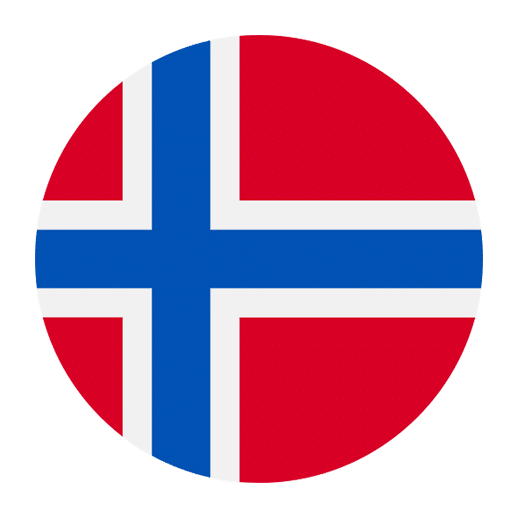The advent of the internet and social media has revolutionized the way we communicate. With this new mode of communication comes a whole new vocabulary, especially in different languages. If you are learning Norwegian, understanding the online and social media vocabulary is essential. This guide will introduce you to key terms and phrases that are commonly used on the internet and social media platforms in Norwegian.
Basic Online Vocabulary
Before diving into the more specialized social media terms, it’s important to grasp some basic online vocabulary. These words and phrases form the foundation of any online communication and will be helpful across various platforms.
Internett (Internet) – The global network of interconnected computers.
Nettside (Website) – A collection of web pages under a single domain.
Lenke (Link) – A hyperlink that leads to another web page.
Nettleser (Browser) – A software application for accessing information on the World Wide Web. Common browsers include Chrome, Firefox, and Safari.
Nedlasting (Download) – The process of receiving data from the internet to your computer or device.
Opplasting (Upload) – The process of sending data from your computer or device to the internet.
Brukernavn (Username) – The unique identifier used to log into a website or online service.
Passord (Password) – A secret word or phrase used to gain access to a service.
Innlogging (Login) – The act of accessing a service by entering your username and password.
Utlogging (Logout) – The act of exiting a service, ending your session.
Personvern (Privacy) – The protection of personal information online.
Sikkerhet (Security) – Measures taken to protect against unauthorized access or attacks.
Social Media Platforms
Each social media platform has its own set of terms and phrases. Below are some of the most popular platforms and the vocabulary associated with them.
Venner (Friends) – People you are connected with on Facebook.
Nyhetsstrøm (News Feed) – The stream of updates and posts from friends and pages you follow.
Status (Status) – A post or update you share on your profile.
Bilde (Photo) – An image you upload to your profile or a post.
Kommentar (Comment) – A response to a post or status update.
Like (Like) – Showing approval of a post or status update.
Del (Share) – Reposting someone else’s content to your own profile.
Melding (Message) – Private communication between users.
Varsel (Notification) – Alerts about activity on your account.
Følgere (Followers) – People who subscribe to your updates.
Følger (Following) – People or accounts you subscribe to.
Bildetekst (Caption) – Text accompanying a photo or video.
Hashtag (Hashtag) – A keyword or phrase preceded by a hash symbol (#) used to categorize posts.
Story (Story) – A temporary post that disappears after 24 hours.
Direktemelding (Direct Message) – Private communication between users.
Utforsk (Explore) – A feature that shows popular posts and accounts.
Tagge (Tag) – To mention another user in a post or comment.
Tweet (Tweet) – A message or post on Twitter.
Retweet (Retweet) – Reposting someone else’s tweet.
Følgere (Followers) – People who subscribe to your updates.
Følger (Following) – People or accounts you subscribe to.
Hashtag (Hashtag) – A keyword or phrase preceded by a hash symbol (#) used to categorize tweets.
Svar (Reply) – Responding to a tweet.
Direktemelding (Direct Message) – Private communication between users.
Emneknagg (Topic) – A subject or theme for tweets.
Snapchat
Snap (Snap) – A photo or video sent to friends on Snapchat.
Historie (Story) – A collection of snaps that are visible for 24 hours.
Bitmoji (Bitmoji) – A personalized avatar used in snaps and messages.
Geofilter (Geofilter) – A location-based filter for snaps.
Venner (Friends) – People you are connected with on Snapchat.
Chat (Chat) – Text communication between users.
Minner (Memories) – Saved snaps and stories.
Skjermbilde (Screenshot) – Capturing an image of a snap or chat.
Internet Slang and Abbreviations
Like any other language, Norwegian has its own set of internet slang and abbreviations. These are often used for quicker communication and to convey emotions or reactions.
LOL – Laughing Out Loud.
OMG – Oh My God.
BRB – Be Right Back.
IKR – I Know, Right?
FYI – For Your Information.
OMG – Oh My God.
WTF – What The F***.
TBH – To Be Honest.
IMHO – In My Humble Opinion.
ROFL – Rolling On the Floor Laughing.
BTW – By The Way.
DM – Direct Message.
PM – Private Message.
NSFW – Not Safe For Work.
Common Phrases and Expressions
Here are some common phrases and expressions used in online communication and social media in Norwegian.
Hva skjer? (What’s happening?) – Used to ask about current events or updates.
Hvordan går det? (How’s it going?) – A casual way to ask how someone is doing.
Se på dette! (Check this out!) – Used to draw attention to something interesting.
Jeg er enig (I agree) – Used to show agreement with a statement or post.
Jeg er uenig (I disagree) – Used to show disagreement with a statement or post.
Gratulerer! (Congratulations!) – Used to congratulate someone.
Takk! (Thank you!) – Used to express gratitude.
Hva synes du? (What do you think?) – Used to ask for someone’s opinion.
Kan du hjelpe meg? (Can you help me?) – A request for assistance.
Jeg trenger hjelp (I need help) – Expressing a need for assistance.
Jeg er her (I am here) – Indicating your presence.
Jeg er borte (I am away) – Indicating your absence.
Privacy and Security Vocabulary
Given the importance of privacy and security in online communication, here are some essential terms you should know.
Personvern (Privacy) – The protection of personal information.
Sikkerhet (Security) – Measures to protect against unauthorized access or attacks.
Kryptering (Encryption) – The process of converting information into a secure format.
Passord (Password) – A secret word or phrase used to gain access to a service.
To-faktor autentisering (Two-Factor Authentication) – An additional layer of security requiring two forms of identification.
VPN (VPN) – Virtual Private Network, a service that encrypts your internet connection for increased security.
Brannmur (Firewall) – A network security system that monitors and controls incoming and outgoing network traffic.
Virus (Virus) – Malicious software designed to harm your computer or steal information.
Skadelig programvare (Malware) – Software designed to disrupt, damage, or gain unauthorized access to a computer system.
Phishing (Phishing) – A fraudulent attempt to obtain sensitive information by disguising as a trustworthy entity.
Conclusion
Understanding online and social media vocabulary in Norwegian is crucial for anyone looking to navigate these platforms effectively. This guide has provided a comprehensive overview of essential terms and phrases that will help you communicate more easily and understand the digital landscape in Norwegian. As you continue to engage with online content and social media, these words and phrases will become second nature, enhancing your fluency and confidence in the language.

